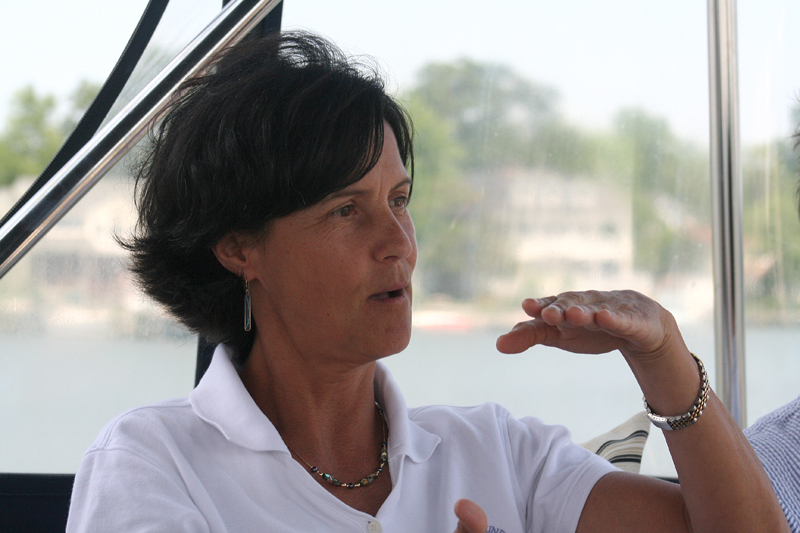7
Bay Scientist: ‘Nitrogen Is Our Oil’

Dr. Beth McGee of the Chesapeake Bay Foundation compares the Gulf of Mexico's oil spill to the Chesapeake Bay's nitrogen surplus during a recent interview. (News21 photo by Brian Hooks)
The broken ecosystem in the Gulf of Mexico is a mirror image of the Chesapeake Bay’s dead zones and chronic decay, warned a leading water quality scientist, Beth McGee.
“Whether it’s impacted by oil, or whether it’s impacted by too much nitrogen, phosphorous and sediment, there’s a lot of similarities there,” McGee, who works for the Chesapeake Bay Foundation, told News21.
“I think it is in a sense that nitrogen is our oil,” McGee said, glancing over her shoulder at the glistening Severn River. McGee was traveling with a News21 team aboard the “Anonymous Source,” a 40-foot trawler owned by the editor of MadMariner.com, Glen Justice.
“If you look at the big picture in terms of resources being degraded because of water quality, we have a dead zone that makes a place where animals can’t live or can stress them to the fact that they are more susceptible to disease, which is exactly what oil does,” she said.
The slow pace of the Chesapeake Bay’s deterioration, taking place largely underwater, has led to little public outrage over the gradual disappearance of the estuary’s clear waters, fish and crab.
“I think that’s why they are not outraged: because it is beautiful. You look around, and the Bay on the surface is beautiful,” said McGee. Anyone would have to drop an oxygen probe to the bottom to see the that there is no oxygen there, she added.
“We’re not outraged because it’s not in our face, like it is in the face of the folks in the Gulf, where they can’t go fishing, they can’t buy seafood, they are seeing oil on their beaches,” McGee said.
–by Sharon Behn
About Us
Our Stories
- Md. Officials May Temporarily Lift Ban on Female Crab Harvest in Bay
- Scientists, Environmentalists Question Readiness of Chesapeake Bay Disaster Plans
- Inner Harbor Water: Unsafe Bacteria Levels, Test Shows
- Swimmers’ Impressions of Bay Not Always in Sync With Its Health, Scientists Say
- Chesapeake Bay Swim Attracts Hundreds in Balmy Conditions, But Course Includes ‘Dead Zone’















